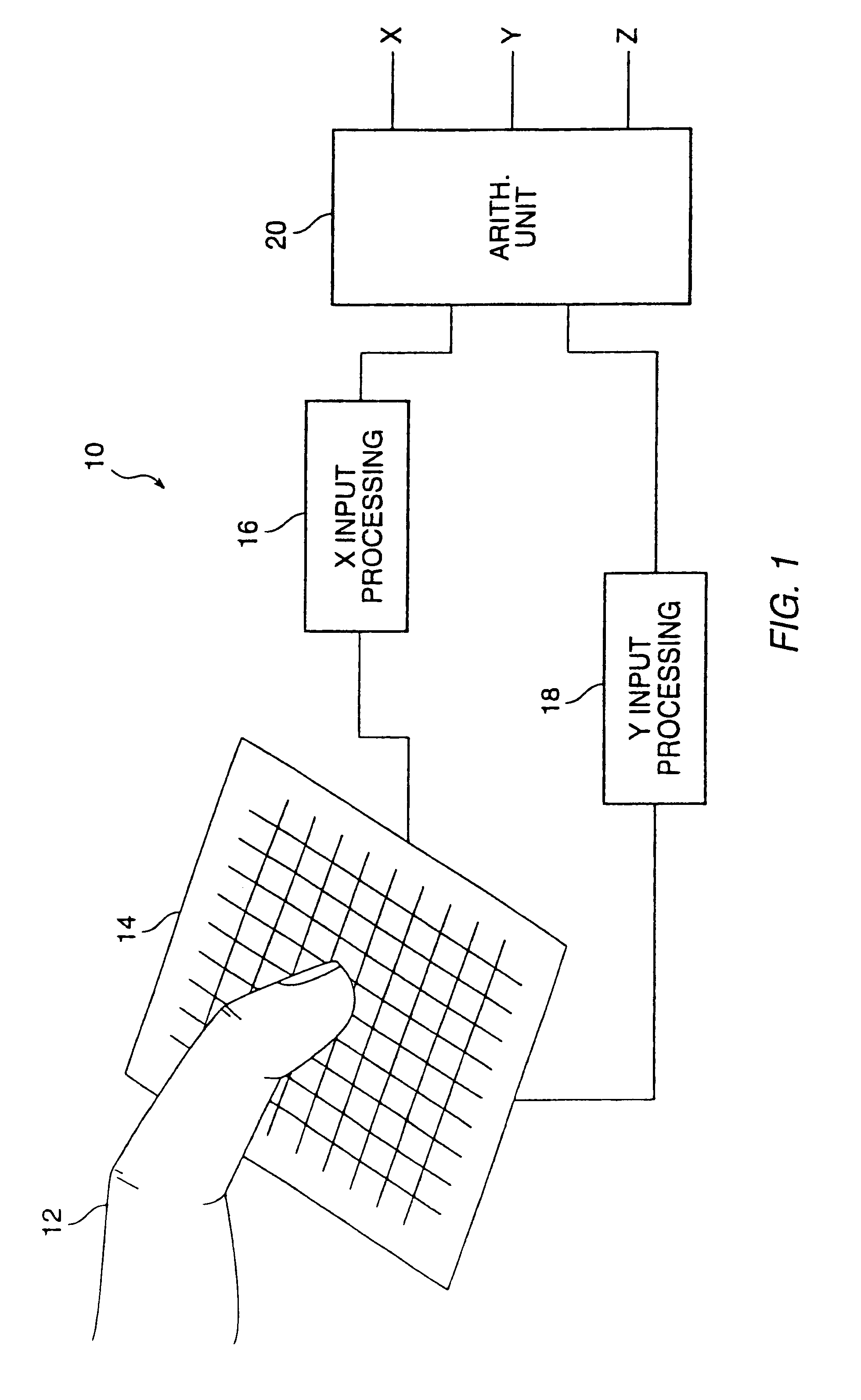Object position detection system and method
a technology of object position and detection system, applied in the field of object position recognition, can solve the problems of large size, high cost of trackball devices, and inability to detect objects,
- Summary
- Abstract
- Description
- Claims
- Application Information
AI Technical Summary
Benefits of technology
Problems solved by technology
Method used
Image
Examples
Embodiment Construction
This application is a continuation-in-part of co-pending application Ser. No. 08 / 115,743, filed Aug. 31, 1993, now U.S. Pat. No. 5,374,787, which is a continuation-in-part of co-pending application Ser. No. 07 / 895,934, filed Jun. 8, 1992. The present invention continues the approach disclosed in the parent applications and provides more unique features not previously available. These improvements provide a more easily integrated solution, increased sensitivity, and greater noise rejection, increased data acquisition rate and decreased power consumption. Additionally, the present invention allows for continuous self calibration to subtract out the effects of environmental changes.
Those of ordinary skill in the art will realize that the following description of the present invention is illustrative only and not in any way limiting. Other embodiments of the invention will readily suggest themselves to such skilled persons.
The present invention brings together in combination a number of...
PUM
 Login to View More
Login to View More Abstract
Description
Claims
Application Information
 Login to View More
Login to View More - R&D
- Intellectual Property
- Life Sciences
- Materials
- Tech Scout
- Unparalleled Data Quality
- Higher Quality Content
- 60% Fewer Hallucinations
Browse by: Latest US Patents, China's latest patents, Technical Efficacy Thesaurus, Application Domain, Technology Topic, Popular Technical Reports.
© 2025 PatSnap. All rights reserved.Legal|Privacy policy|Modern Slavery Act Transparency Statement|Sitemap|About US| Contact US: help@patsnap.com



